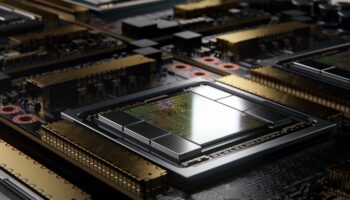Alan Wake 2’s PC requirements are finally out. While the GPU rasterization recommendations are modest, with an RTX 4070 or RX 7800 XT for 4K Ultra, the ray-tracing and path-tracing specifications are unsurprisingly high. For 1080p “Low Ray Tracing,” you’ll need a GeForce RTX 3070 or a Radeon RX 6800 XT. Higher resolutions with path-tracing require a GeForce RTX 4070 and higher, with DLSS/FSR enabled.
At the lower end, there’s another anomaly. NVIDIA’s GeForce RTX 2060 is included, but on AMD’s end, instead of the RX 5700/5700 XT, we see the RX 6600. It turns out that the 1st Gen RDNA Radeon RX 5000 series GPUs aren’t supported due to the lack of Mesh Shader functionality on these SKUs. (Via WCCFTech)
Initially introduced with the GeForce RTX 20 “Turing” GPUs, mesh shading has been part of the DirectX 12 Ultimate API. It dramatically increases the level of detail (LOD) by adopting a simple, user-defined, multi-threaded model for the geometry pipeline instead of the previously multi-stage model.
The primary difference is that while the input of the hull shader took in patches (output of the tessellated object), the task shader has a user-defined input and output. The above scene consists of thousands of objects and hundreds of thousands of meshes.
In the traditional model, each would require a draw call from the CPU. However, with the task shader, a list of objects using a single draw call is sent. The task shader then processes this list in parallel and assigns work to the mesh shader (which also works synchronously) after which the scene is sent to the rasterizer for 3D to 2D conversion.

This helps reduce the number of CPU draw calls (exponentially) per scene, allowing the use of highly detailed meshes. Mesh shaders also facilitate the culling of unused triangles. This is done using the amplification shader. It runs before the mesh shader and determines the number of mesh shader thread groups needed.

It tests the various meshlets for possible intersections and screen visibility and carries out the required culling. Geometry culling at this early rendering stage significantly improves performance.


Further reading:






